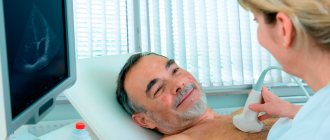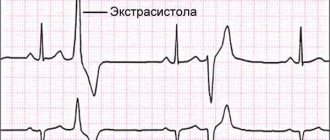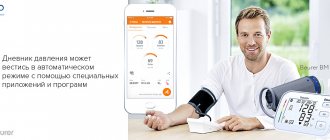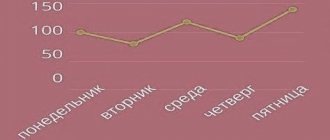In the modern world, filled with endless bustle, obligations, work and other matters of high importance, you need to be able to stop in time and ask yourself the only question: is everything okay with my health? The human heart, unfortunately, has a very limited resource. And all other functions of the body depend on how well it works. Therefore, monitoring blood pressure, one of the most important parameters characterizing the functioning of the circulatory system, is the first necessity of every person who takes care of himself and thinks about his loved ones.
ABPM - features of the procedure
ABPM is a technique that allows timely detection of blood pressure disorders in people at high risk. With the help of this examination, it is possible to take appropriate measures, adjust the therapeutic course, and prevent the development of extremely dangerous complications.
Patients suffering from cardiovascular pathologies are prone to changes in blood pressure. The reasons for a decrease or increase in blood pressure can be stressful situations, physical activity, and even the characteristics of the patient’s daily diet.
Hypertension is not diagnosed by a one-time blood pressure measurement. Information obtained in this way often turns out to be unreliable, due to various factors. The very stay of a person in the hospital is a stressful situation that contributes to an increase in blood pressure.
An examination such as 24-hour blood pressure monitoring (ABPM) makes it possible to make an accurate diagnosis.
Daily monitoring is considered an extremely informative and accurate method of diagnosis in people with diagnosed pathologies of the heart and blood vessels.
24-hour blood pressure monitoring (ABPM)
What is Holter monitoring
Holter is used to diagnose and record the state of the cardiovascular system over an extended period of time. In addition to the heart, it is used to study the electrical activity of the brain. In this case, the device does not record ECG or EEG - electroencephalography. The technique allows you to go through your normal day and record every heartbeat. Then the doctor will decipher the data and be able to fully assess the threats, causes and methods of combating the disease.
What does ABPM show?
The ABPM device makes it possible to record minimal changes in blood pressure, displaying them graphically. ABPM results are examined by a qualified specialist. Based on the information received, the doctor makes a diagnosis for the patient and develops a therapeutic course suitable for the specific clinical case.
This examination shows:
- changes in the patient’s blood pressure during physical activity;
- working pressure, in a calm state;
- pulse pressure indicators;
- the patient's blood pressure at night.
During monitoring, it is necessary for the patient to keep a diary in which he would note all changes caused by physical activity, possible psycho-emotional shocks, times of awakening and falling asleep, and dietary habits. Thus, the interpretation of ABPM results will be extremely reliable.
Carrying out this diagnostic is a lengthy process, since specialists have to work with a large amount of data. The device is characterized by high sensitivity. ABPM data combines the following:
- changes in blood pressure during physical activity;
- pulse pressure indicators;
- a graph of blood pressure changes throughout the day;
- level of blood pressure decrease at night;
- average diastolic and systolic pressure;
- level of decrease in blood pressure in a sleepy state.
Based on the analysis of the data obtained, a final medical opinion is made regarding the interpretation of ABPM.
Example of survey results
A LITTLE SMAD is watching you
Blood pressure indicators that are measured during an appointment with a doctor or by the patient themselves do not always reflect the actual picture. The reasons are different. This includes the patient’s anxiety - “white coat hypertension”, and the load that may have occurred recently, and the adjustment of the tonometer. In principle, a one-time blood pressure measurement is not very informative. In order to obtain reliable and diagnostically significant information, a research method such as 24-hour blood pressure monitoring, or ABPM for short, is used. Typically, an ABPM device installed on a patient measures blood pressure every 30 minutes during the day and every 60 minutes at night. Daily statistics include at least 21 measurements. Least! With such data, we can say that the doctor receives almost 100% reliable information about the dynamics of blood pressure. Let us repeat once again that one-time measurements do not provide a clinical picture, since the obtained indicators depend on the current physical or psychological stress, the serviceability of the device, and the skill of the person who measures blood pressure.
Who, in accordance with federal standards, needs to carry out 24-hour blood pressure monitoring (ABPM)? For patients with arterial hypertension, ABPM is recommended in 100% of cases. 100%! There can be no exceptions. In total, there are more than twenty indications for ABPM. Blood pressure monitoring should be carried out in pregnant women, patients with insulin-requiring diabetes mellitus, and patients with a family history of arterial hypertension. This could be “white coat hypertension”, or monitoring the effectiveness of treatment.
Based on the ABPM results, the doctor receives six key indicators. Let's look at them.
The first indicator includes average pressure during the day and at night. It is important to note that the normal average daily pressure is 135 over 80, at night - 120 over 70. If the average daytime pressure is above 140 over 90, this is hypertension. If the nightly average is above 125 over 80, this is also hypertension. What lies between these limits, normal and hypertension, is considered borderline pressure.
Another indicator is the so-called daily index. Normally, night pressure should be 10-20% lower than during the day. It should decrease when a person falls asleep, smoothly transition to a plateau, and gradually rise in the morning. On the graph, the curve looks like a bucket. Dipper is a dipper in English and people with such graphs are called dippers accordingly. This is the norm. If the pressure decreases slightly, by less than 10%, then the “bucket” exists, but it is shallow. Such patients are called non-dippers
(
non-dippers
) and they have a high risk of developing heart failure and damage to target organs - the brain, heart, kidneys, liver, eyes. If a patient is prescribed treatment, but meanwhile remains a non-dipper, then we can say that the therapy is ineffective.
The next category of patients are overdippers
(
over-dippers
). These are those whose blood pressure drops by more than 20 percent at night—the dipper is deep. Such dynamics of blood pressure leads to hypoperfusion, insufficient blood supply to the brain. These are patients at high risk of strokes in the morning and night hours.
And the last fourth group is the night pickers
(
night-peakers
), that is, those who have very high night pressure, that is, there are night crises. This happens, for example, in patients with diabetes mellitus, malignant hypertension, resistant and symptomatic hypertension. Knight pickers have a high risk of stroke.
The third indicator is the rate of morning pressure rise. Normally, the rate of morning pressure rise should not exceed 10 mmHg per hour. If, for example, such a patient is undergoing antihypertensive therapy and it is higher, then this is a signal that the prescribed medication is ineffective. If the rate of morning pressure rise is above 15%, then the patient is at high risk of heart attack.
The fourth indicator of ABPM is the pressure load index, which shows the proportion of daily measurements exceeding the norm. If it makes up about 20% of all measurements taken during the day, then this is acceptable. If the pressure load index is above 25%, then we are talking about hypertension, above 30% is persistent hypertension, above 50% is refractory malignant hypertension.
The next indicator is pulse pressure, that is, the difference between systolic and diastolic pressure. Example: as a result of measuring blood pressure, the result was 120 over 80. Pulse pressure is 120 minus 80, for a total of 40. High pulse pressure is a risk factor for target organ damage. Normally, it should be less than 46. If ABPM reveals that it is higher, then we can conclude that therapy is ineffective, if any. There is a risk of complications developing.
The sixth indicator is blood pressure variability. During the day, pressure, like any other indicator, will change. It is important that it varies within a certain corridor. If the variability is high, that is, during the day the pressure went beyond the maximum permissible limits, then most likely the patient has vegetative-vascular dystonia, the prescribed therapy is ineffective and there is a high risk of target organ damage.
These are the main key points that you need to know when prescribing ABPM or if you keep your own blood pressure diary.
There are ABPM devices that only “can” measure blood pressure, and there are those that have the function of taking an electrocardiogram (ECG). We are talking about ABPM plus daily ECG monitoring. The latter makes it possible to identify the presence of coronary heart disease in the patient. As a result, very valuable diagnostic information can be obtained, since patients very often have a combination of hypertension and coronary artery disease. In the following materials we will talk about Holter ECG monitoring, the indicators that the doctor receives, and what they mean when diagnosing heart pathologies.
Indications for examination
This procedure has the following clinical indications:
- hypotension;
- diagnosis of situational increases in blood pressure;
- identifying the degree of hypertension;
- monitoring blood pressure in women during pregnancy.
Holter monitoring can be recommended for people who have suffered strokes or heart attacks in the recent past, in order to monitor the dynamics and timely correction of the therapeutic course.
The following pathologies are relevant to the procedure:
- renal failure;
- vascular atherosclerosis;
- diabetes;
- heart failure;
- gestational disorders.
Patients suffering from these diseases are at high risk and are most susceptible to developing hypertension.
During pregnancy, examinations are carried out to monitor the health of the expectant mother. In the last trimesters, negative 24-hour blood pressure readings in the patient serve as an indication for an urgent cesarean section.
Long-term monitoring is mandatory for patients with hypertension to monitor the dynamics of the pathological process, monitor the effectiveness of the treatment, and develop the most effective therapeutic course.
Who is Holter monitoring indicated for?
According to the observations of our doctors, wearing a Holter monitor is the most effective way to diagnose heart rhythm disorders.
Your doctor will prescribe you to wear a halter in the following cases:
- loud heartbeat;
- interruptions in heart rhythm;
- fainting of unknown etiology;
- upcoming heart surgery;
- congenital heart defects, diabetes mellitus, apnea;
- so-called “silent” myocardial ischemia (no pain)
- interruptions in the operation of the pacemaker, etc.
Unfortunately, if you suffer from coronary heart disease (CHD), the results of Holter monitoring cannot provide an objective picture. You should also know that if no pathology was identified during the study, this is not a 100% guarantee of its absence.
When is the procedure contraindicated?
24-hour blood pressure monitoring has no absolute clinical contraindications. The examination may be temporarily postponed for the following reasons:
- skin rashes;
- period of exacerbation of dermatological diseases occurring in a chronic form;
- fractures;
- burn lesions;
- bruises, traumatic injuries.
Various injuries and violations of the integrity of the skin in the area where the cuff is installed make the examination impossible. In such cases, diagnosis is postponed until the patient’s skin has fully recovered and restored.
In case of a fracture, ABPM is not possible
Preparation for the event
To obtain the most accurate and reliable ABPM results, it is necessary to properly prepare for the procedure. Patients should pay attention to the following recommendations:
- do not wear clothes that restrict or impede movement;
- normalize your schedule and daily routine;
- refrain from performing water procedures;
- avoid physical exertion and psycho-emotional shocks.
In the evening, before installing the device, you can take a sedative in order to have a good rest and recover before the examination.
If the patient is being treated with drugs, the effect of which may affect the examination results, it is necessary to report this.
When wearing the device, it is important to ensure that no moisture gets on it and the device does not fail.
How is the procedure performed?
The Holter examination includes an electrocardiogram and ABPM. This procedure is a round-the-clock monitoring of changes in heart rate and pulse, with fluctuations in blood pressure.
The examination is carried out as follows:
- An air-permeable cuff is placed on the patient’s arm (in the shoulder area);
- The cuff is fixed to the ABPM device;
- The device is attached using a harness to the patient’s chest;
- Blood pressure readings are measured automatically every half hour;
- The received data is recorded in the device’s memory.
The ABPM device is distinguished by a complex device that has the ability not only to measure blood pressure indicators, but to analyze them and draw up graphs. In order to get reliable results, the patient only needs to follow the following rules:
- refrain from taking medications without prior approval from your doctor;
- move freely and live according to your usual schedule;
- refrain from water procedures;
- Make sure that the tube of the device is not kinked.
It is also necessary to responsibly keep a diary, entering into it data about any physical activity or stressful situations that can provoke changes in blood pressure.
Holter study includes ABPM and electrocardiogram
When is Holter diagnostics prescribed?
- For regular complaints of heart rhythm disturbances and suspected coronary artery disease
- To evaluate heart disease that has previously been diagnosed and treated
- To evaluate the performance of a pacemaker some time after its installation
Daily Holter monitoring can be carried out without any apparent reason, simply as an accurate option for diagnosing heart function. This study has no contraindications. People suffering from various chronic diseases, pregnant women, and people of all ages can pass through it. The device does not have any specific effect on the body.
Patient Instructions
The installation process of the device is painless and does not cause any discomfort to the person. The only inconvenience that the patient faces is the pressure on the arm with the cuff that occurs during the period of measuring blood pressure.
There are certain instructions, following which the patient can prevent possible ABPM errors:
- wear comfortable, loose-fitting clothes;
- do not be nervous and try to avoid stress;
- eat as usual without changing your diet;
- avoid overwork;
- refrain from using medications intended to treat hypertension.
On the day of monitoring, in order to avoid unnecessary worries and unpleasant emotions that can distort the results, the patient is recommended to avoid unnecessary contacts and, if possible, spend time at home, in a calm, relaxed state.
Life schedule is also of great importance. Going to bed should be done at a person’s usual hours. Therefore, you should also refuse to work on night shifts during monitoring or schedule an examination for another day.
Disadvantages of the procedure
The ABPM device is compact and invisible to others, so it can even be worn under clothing.
The disadvantages of this procedure include the following:
- Impaired sensitivity of the hand in the area where the cuff fits. Some patients complain of tension, discomfort, and increased fatigue of the limb.
- Diaper rash, skin irritation. It is observed in people with overly sensitive and delicate skin. This is due to the fact that the material from which the cuff is made does not allow air to pass through and the skin cannot breathe.
- The need to ensure that there is no compression of the tube that connects the device to the cuff. It is especially difficult to follow this rule at night. Before going to bed, a person needs to choose a certain position that does not interfere with the free flow of air into the cuff area. As a result, some patients complain of insomnia and sleep disorders.
This procedure does not cause any other side effects or unwanted reactions. During the examination, a person can carry out everyday activities and lead a normal lifestyle.
Compact device causes minimal discomfort
Examination price
Daily blood pressure monitoring is prescribed to patients by a cardiologist. The price of the examination depends on factors such as the type of device used during the examination, as well as the prices of the specific clinic the patient goes to.
The average cost of ABPM is about 2300 - 2500 rubles. At the same time, in some clinics, the procedure can cost only 1200-1500 rubles, and in other, more expensive, private medical institutions - 3000 rubles.
Is it possible to deceive ABPM?
ABPM is a procedure that diagnoses hypertension, severe heart failure and other serious pathologies that are contraindications for military service.
For this reason, young people are often interested in the possibility of distorting the results of the examination in order to avoid conscription. It is indeed possible to deceive ABPM by using methods that artificially increase blood pressure:
- 3 days before installation of the device, use tonic medications.
- Drink strong coffee drinks, black tea, or take caffeine tablets.
- Hold your breath while the cuff is installed.
- When wearing the device, lower the arm to which the device is attached as often as possible below the level of your heart. Thus, blood flow processes are disrupted, which contributes to increased blood pressure.
- While measuring blood pressure, pull up your toes and squeeze your gluteal muscles.
- Avoid sleep on the day of monitoring. This is due to the fact that when you fall asleep, your blood pressure drops by 20%.
Experts note that the above actions have an extremely negative impact on the state of the cardiovascular system!
Daily blood pressure monitoring (ABPM) is an informative diagnostic method that allows you to monitor the condition of patients with diagnosed cardiovascular pathologies and prescribe them the most effective treatment, avoiding adverse consequences and complications.
How to measure blood pressure correctly so as not to miss hypertension?
How often do we check our blood pressure? Do you have a blood pressure monitor in your home medicine cabinet? Monitoring your blood pressure on a regular basis is actually much more important than it might seem.
For this article, Gen. director and candidate of medical sciences Oksana Alekseevna Makeeva interviewed cardiologist Mushegh Aikovich Manukyan. You will learn how to measure blood pressure correctly, the main risk groups for arterial hypertension, and 24-hour blood pressure monitoring (ABPM).
By the way, a device for daily monitoring is now at the disposal of cardiologists and therapists in our clinic.
Oksana Makeeva: Mushegh Aikovich, what are the indications for prescribing 24-hour blood pressure monitoring? Which patients do you usually prescribe this test for?
Mushegh Manukyan: We prescribe this study to patients who suspect the presence of arterial hypertension (AH), or to adjust treatment in patients with confirmed hypertension (increased pressure above 140/90 mm Hg on an ongoing basis). Hypertension is very dangerous and widespread - it affects every third person aged 18 years and older.
O.M.: A third of people - are we talking about all the people in the world or only about cardiologists' patients? It turns out that if we talk about the patients who come to see you, then almost every one of them is the first or second?
M.M.: Yes, about the entire adult population of the globe. Among cardiac patients, and these are mainly older people, over 60% have hypertension.
O.M.: How does 24-hour monitoring differ from regular measurements with a good tonometer at home?
M.M.: The fundamental difference is in the method of measuring blood pressure - the devices use different research methods. In addition, single, double and even triple blood pressure measurements are a microscopic part of the daily blood pressure biorhythm. There is a two-phase norm of blood pressure biorhythm, which cannot be captured even by ten measurements per day, and daily monitoring allows you to repeatedly measure pressure at a certain interval (for example, every 30 minutes during the day, every 60 minutes at night). Thus, we obtain daily biorhythms in natural, natural conditions - after all, it is one thing when blood pressure is measured at rest, and another thing during a person’s daily activities.
O.M.: So, as a result, when studying daily blood pressure monitoring, you get some kind of graph, mathematical calculations? What does this graph tell you? Does therapy vary depending on the type of curve?
M.M.: Yes, the monitor performs mathematical processing of data and draws graphs. We also see a certain biorhythm curve. If you have kidney disease, for example, your blood pressure rises at night and the normal daily blood pressure profile changes. Of course, 24-hour blood pressure monitoring data is used to adjust treatment.
O.M.: The patient himself cannot find out that his blood pressure rises at night?
M.M.: He can’t. Currently, the only way to measure blood pressure during sleep is to use a 24-hour blood pressure monitoring device.
O.M.: You said that measuring blood pressure in a calm state is not entirely indicative. What do you think about the phenomenon of “white coat hypertension”, in which the patient claims that everything was fine in the morning, but when he came to the doctor, his blood pressure increased?
M.M.: Yes, this happens very often. Daily monitoring in this case is the best way to exclude or confirm the diagnosis. In most cases, the “white coat” phenomenon occurs in young and/or emotional people; whether treatment is required or not is decided individually with each patient.
O.M.: How many people measure their blood pressure correctly? Let's imagine that the patient has, in his opinion, “white coat hypertension” - could this be the result of incorrect measurements at home?
M.M.: There are special rules for measuring pressure both at home and in the doctor’s office. You must be at rest, do not smoke or engage in physical activity 5 minutes before the measurement, you must relax, do not cross your legs, place your shoulder with the cuff at the level of your heart - no higher and no lower. It is imperative to select the correct cuff size (a specialist will help with this). Only a doctor can confirm or exclude “white coat” hypertension based on ABPM data.
O.M.: That is, if there is one device in a family, and family members have different weights and heights, does everyone need their own cuff?
Hmm yeah. Otherwise you may get incorrect results.
O.M.: How wrong can the results be with an incorrectly selected cuff?
M.M.: There can be a colossal difference, 10-20%. Incorrect measurement leads to data distortion and inadequate treatment, so it is very important to select the correct size cuff.
O.M.: If you suspect hypertension and recorded high blood pressure numbers at your appointment, is one study enough for you to prescribe therapy?
M.M.: No, most often it is necessary to carry out additional daily blood pressure monitoring. At the same time, ABPM does not override home blood pressure measurement, but only provides additional information to the doctor, which would be inconvenient or difficult for a person to obtain on their own. It is better to use all measurement methods. If there is a history of increased blood pressure and ABPM confirms this, a diagnosis can be made. Additionally, a comprehensive examination is carried out to determine whether there are changes in the heart and kidneys due to constantly elevated blood pressure.
O.M.: The patient came to the appointment and said that he had high blood pressure, but there were no medical records about this anywhere. When measured, he really has high blood pressure, but a diagnosis cannot be made on this basis? Should he come several times on different days?
M.M.: Yes, indeed, several visits are needed to make a diagnosis of hypertension. If the patient registers a constant increase in pressure greater than 160 mmHg. - this does not raise any doubts about the diagnosis and there is no need to go many times, but it is still better to confirm the diagnosis using ABPM, since this may be “white coat” hypertension. It is also worth considering age, general health and concomitant diseases. A young person without other health problems will not be diagnosed with hypertension the first time, because they will have to first try to find the cause. Older patients already have a history of chronic diseases, so the diagnosis is easier.
O.M.: Previously, the term “essential hypertension” was often used, but now it is used less frequently. Tell me, do they use this diagnosis now? Is it hypertension on its own, without any special reason?
M.M.: Yes, they do. According to various sources, essential hypertension occurs in 80-90% of cases of hypertension, most often in older people. We make this diagnosis when we have excluded all primary causes of increased blood pressure (kidney diseases, changes in the renal arteries, endocrinological, neurological diseases) and there are no objective conditions that would cause hypertension. And secondary hypertension, that is, that hypertension, is caused by
which is some other disease, is more common in young people.
MAKE AN APPOINTMENT WITH A CARDIOLOGIST










